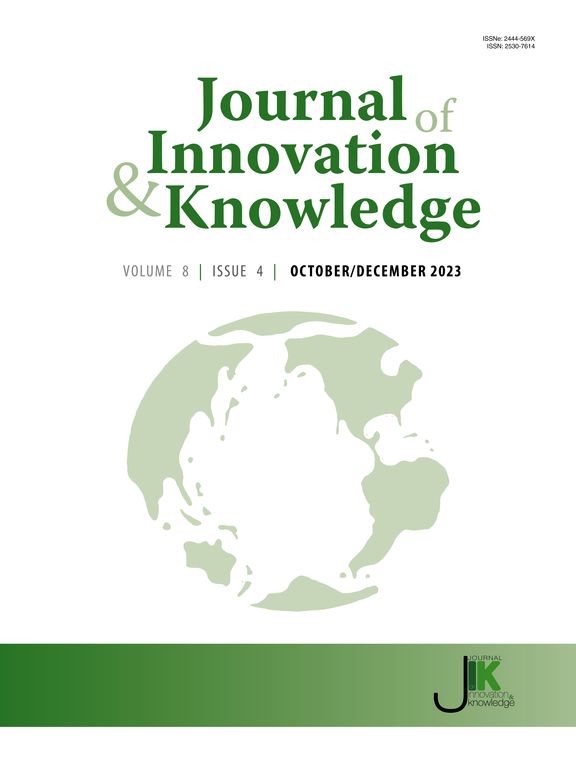以技术创新和结构转型促进农业经济增长:一个多层次的分析
IF 15.5
1区 管理学
Q1 BUSINESS
引用次数: 0
摘要
农业经济在保障国家粮食安全、促进经济稳定增长、促进社会和谐发展等方面具有不可替代的重要作用。农业技术创新和农村产业结构转型是农业经济增长的关键驱动力。虽然以前的研究主要集中在ATI和RIST对AEG的个体影响上,但对这些因素之间具体联系途径的研究有限。本研究利用2009 - 2022年中国30个省份的面板数据,采用多层结构方程模型,在国家和地区层面上系统考察了ATI、RIST和AEG之间的关系。此外,还深入分析了具体变量之间的内在联系。研究结果表明,在国家层面上,农业技术创新对农村产业结构转型升级和农业信息化具有显著的促进作用。然而,RIST和升级对AEG的直接影响并不明显。区域层面的分析表明,工业增加值对农村工业增加值具有显著的正向影响,促进了农村产业结构的优化。此外,农村产业结构升级对AEG有显著促进作用。本文的研究方法为通过ATI和RIST升级促进农业经济发展提供了理论和实证支持。研究结果为政策制定者提供了有价值的见解,使他们能够更好地将农业政策与关键创新方向和结构改进结合起来,最终促进农业可持续发展。研究结论可为农业企业和农业从业者适应产业结构调整,充分利用技术进步,提高农业生产效率和经济效益提供决策参考。本文章由计算机程序翻译,如有差异,请以英文原文为准。
Advancing agricultural economic growth through technology innovation and structural transformation: A multilevel analysis
The agricultural economy plays an irreplaceable and crucial role in ensuring national food security, promoting stable economic growth, and fostering harmonious social development. Agricultural technology innovation (ATI) and rural industrial structure transformation (RIST) are key drivers of agricultural economic growth (AEG). Although previous studies have largely focused on the individual impacts of ATI and RIST on AEG, research on the specific pathways linking these factors is limited. This study utilizes panel data from 30 Chinese provinces from 2009 to 2022 and employs a multilayer structural equation model to systematically examine the relationships among ATI, RIST, and AEG at both national and regional levels. In addition, it provides an in-depth analysis of the internal connections among specific variables. The findings indicate that, at the national level, ATI plays a crucial role in significantly advancing both the transformation and upgrading of rural industrial structures and AEG. However, the direct impact of RIST and upgrading on AEG is not clearly evident. The regional-level analysis reveals that ATI has a significant positive effect on AEG and promotes the optimization of rural industrial structures. In addition, upgrading rural industrial structures significantly enhance AEG. This study’s methodology offers both theoretical and empirical support for promoting agricultural economic development through ATI and RIST upgrading. The findings provide valuable insights for policymakers, enabling them to better align agricultural policies with key innovation directions and structural improvements, ultimately fostering sustainable agricultural development. Furthermore, the conclusions serve as a decision-making reference for agricultural enterprises and practitioners, guiding them to adapt to industrial structural adjustments, leverage technological advancements, and enhance agricultural production efficiency and economic benefits.
求助全文
通过发布文献求助,成功后即可免费获取论文全文。
去求助
来源期刊

Journal of Innovation & Knowledge
Multiple-
CiteScore
16.10
自引率
12.70%
发文量
118
审稿时长
37 days
期刊介绍:
The Journal of Innovation and Knowledge (JIK) explores how innovation drives knowledge creation and vice versa, emphasizing that not all innovation leads to knowledge, but enduring innovation across diverse fields fosters theory and knowledge. JIK invites papers on innovations enhancing or generating knowledge, covering innovation processes, structures, outcomes, and behaviors at various levels. Articles in JIK examine knowledge-related changes promoting innovation for societal best practices.
JIK serves as a platform for high-quality studies undergoing double-blind peer review, ensuring global dissemination to scholars, practitioners, and policymakers who recognize innovation and knowledge as economic drivers. It publishes theoretical articles, empirical studies, case studies, reviews, and other content, addressing current trends and emerging topics in innovation and knowledge. The journal welcomes suggestions for special issues and encourages articles to showcase contextual differences and lessons for a broad audience.
In essence, JIK is an interdisciplinary journal dedicated to advancing theoretical and practical innovations and knowledge across multiple fields, including Economics, Business and Management, Engineering, Science, and Education.
 求助内容:
求助内容: 应助结果提醒方式:
应助结果提醒方式:


